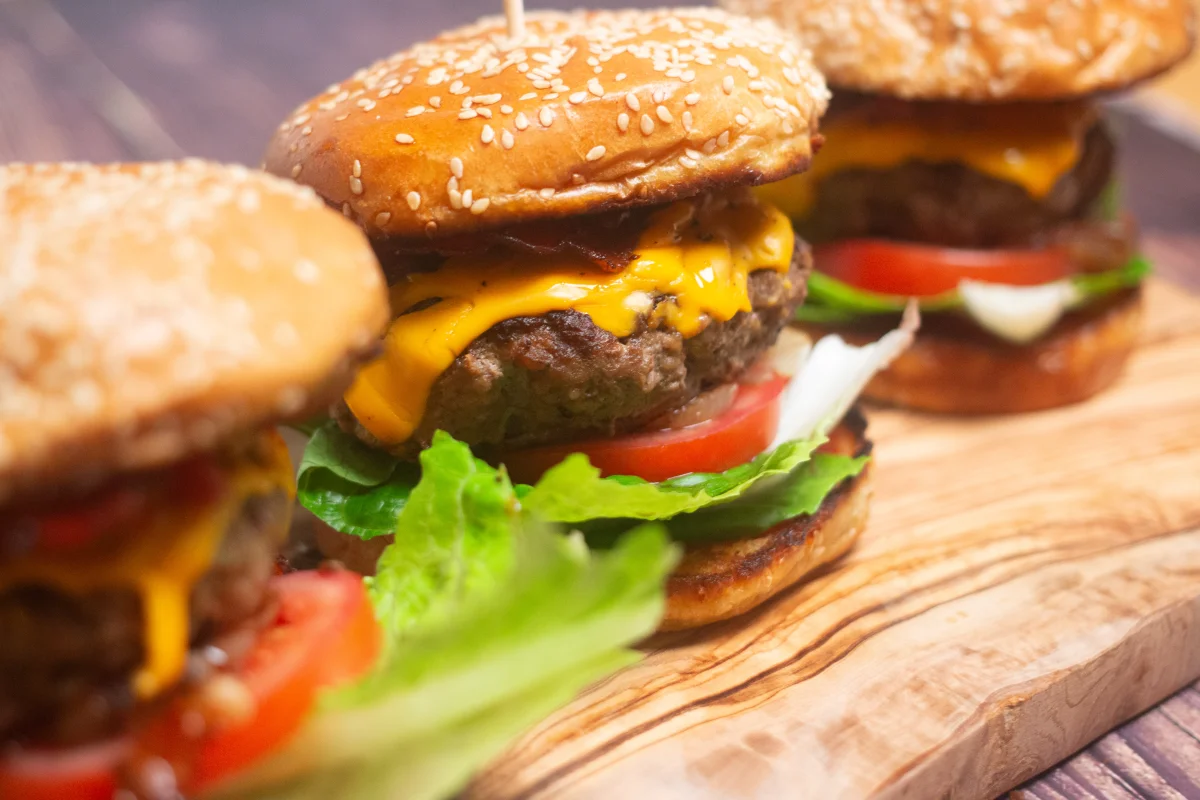
Epic Cheese and Bacon Beef Burger

Making your own restaurant style beef burger is easier than you think. Once you try this you'll never go back to store bought burgers again.
Ingredients
For the Beef Patty
For the Burger Filling
Method
Add the beef mince to a bowl along with the yolk of 1 egg and a good pinch of salt and pepper, and mix everything together with your hands until you have a large meatball.
Divide the meatball into 4 even pieces of a 1/4 lb (115 grams) each, roll into a ball, then press down with the palm of you hand to make the patty shape ) it should be around 1/2 inch thick). Place in the fridge until ready to use.
In a frying pan or griddle, add a little oil and fry your bacon until nice and crispy - the aim is to not just add flavour, but texture to the burger - once ready you can remove and place on a warm plate, or cover in foil to keep warm.
In the same frying pan, cook your onions until softened and caramelised and set aside, while you cook your burgers.
Heat a BBQ/grill/griddle, season both sides of the beef patties and place on the BBQ/grill/griddle. cook for around 4-5 minutes until nicely browned, then turn over, add the cheese slices on top and cook for a further 3-4 minutes until they reach an internal temperature of 70C/160F.
Remove from the heat and cover with foil to rest while you construct your burger.
First start by toasting the buns. Brush the inside of each bun with a little olive oil and toast on the bbq/grill or in a frying pan/griddle until lightly browned. You may need to do this in batches.
Now its time to construct your burger! Place bottom of each bun on a plate and add a little tomato ketchup, followed by a leaf from the gem lettuce, and a slice of tomato, then top with the onions. Carefully place the burger patty on top of the onions, then add a little more ketchup, followed by two rashers of straky bacon and the halved 4 halves of cornichons if using) then add the top of the bun, and place a skewer through the centre of each complete burger to keep everything together. Serve on its own, with fries or a side of your choice.
About this Bacon Cheeseburger
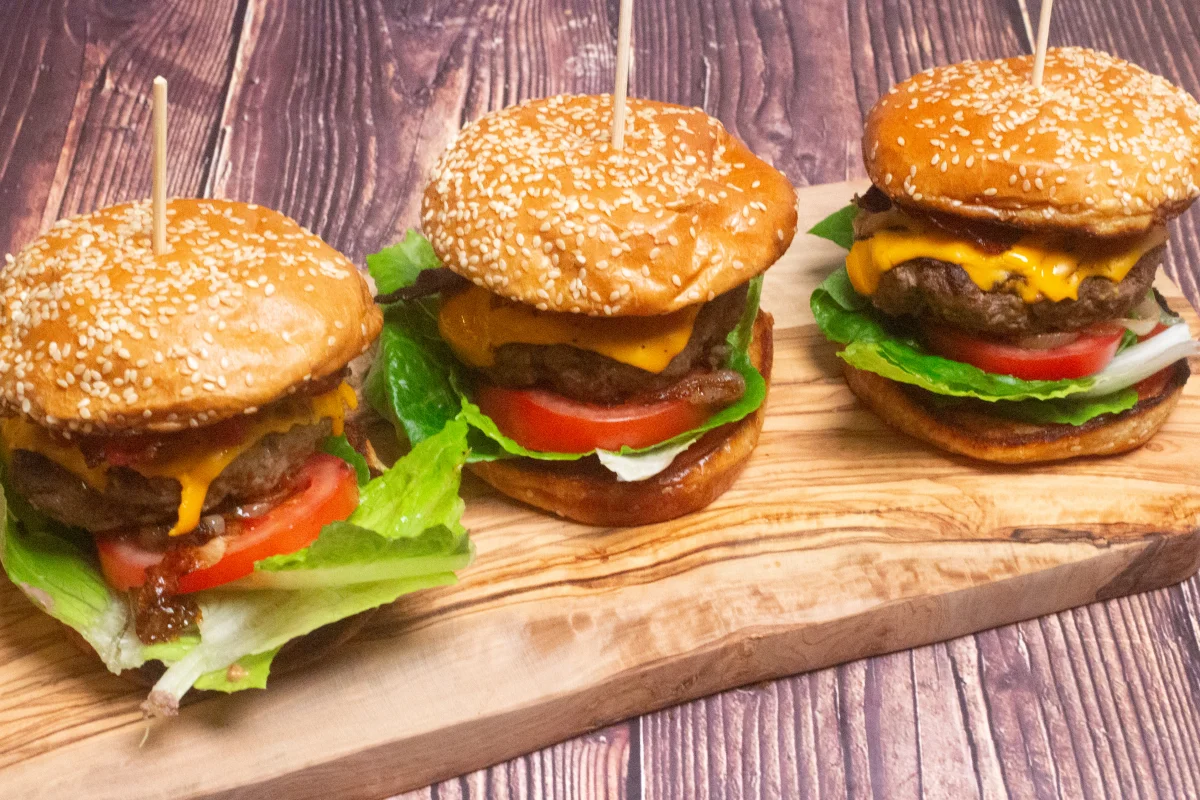
What can be better than the classic cheeseburger?
Well, a homemade classic cheeseburger with beautifully crispy bacon!
It’s actually really easy to make your own burger patties - it’s just beef, salt, pepper, and an egg. That’s it.
This recipe makes 4 x ¼-pounders or 3 x ⅓-pounders, and once you’ve tried these, you won’t bother going back to store-bought.
High-Fat Beef is Best
For burgers you want high fat beef mince / ground beef (around 15-20% fat) - lean beef will dry the burgers out. I've also added an egg yolk to increase the fat content and help bind the patties.
If you all you have is lean minced beef / ground beef then you can add a tablespoon of melted butter or oil to increase the fat content.
You Don't Need Breadcrumbs
Some burger recipes call for breadcrumbs, but they’re not necessary. Ground beef naturally binds when lightly packed, thanks to the proteins released during grinding.
If you’re using beef with a good fat content, the patties will hold together just fine. Unlike meatballs or meatloaf, burgers cook too quickly for breadcrumbs to offer any real moisture benefit - so unless you’re trying to stretch the meat further, you can safely leave them out.
How to Stop Your Burgers from Shrinking
As beef burgers cook, the muscle proteins in the meat contract, making them puff and shrink. To avoid this, you can:
- Press an indent into the middle of each burger patty with your thumb just before cooking - As the burgers cook, the dimple evens out and helps them stay flat.
- Chill the patties in the fridge before cooking - Cold patties mean the exterior proteins set and hold the burger’s shape first, so the whole thing doesn’t contract. The cooler middle heats more slowly, reducing shrinkage.
- Don’t push down on the burgers - That satisfying sizzle you hear when you press with the spatula is fat escaping, which leads to shrinkage.
- Don’t overwork the meat - When forming the patties, handle just enough to bring them together. Overworking compacts the meat structure, forcing fat and moisture out instead of keeping them in.
- Don’t keep flipping - Flipping too often disturbs the surface and causes moisture loss.
The Correct Way to Season Burger Patties
When making the patties, you can add a little seasoning to the mix, but most of the seasoning should be done just before cooking. If you’re prepping a few hours ahead, you might want to leave the salt out of the patty mix, as it can cause the burgers to become firmer and drier.
The best method is to season both sides just before placing them on the heat. That way, you have even salt distribution and a nicely seasoned crust.
Toast Your Buns
Toasting your buns helps form a crisp barrier that prevents them from going soggy.
To toast, brush a little oil on the inside of each bun and place them on the same frying pan you used to cook the bacon, or on the same griddle, grill, or BBQ you used for the burgers - this has the added advantage of soaking up those flavours.
Salad Helps Create a Barrier - So Crispy is Best!
I like to use gem lettuce for my burgers because it’s a robust, crisp leaf that helps create a barrier on the bottom bun - the part most likely to become soggy.
Any similar leaf will work, such as iceberg or romaine. Avoid softer leaves like rocket/arugula for the bottom layer, but feel free to add them on top if you like.
Crispy Bacon Adds Texture
When cooking your bacon try to get it nice and crispy. Crispy bacon not only tastes great, but it adds a lovely contrasting texture to the burger.
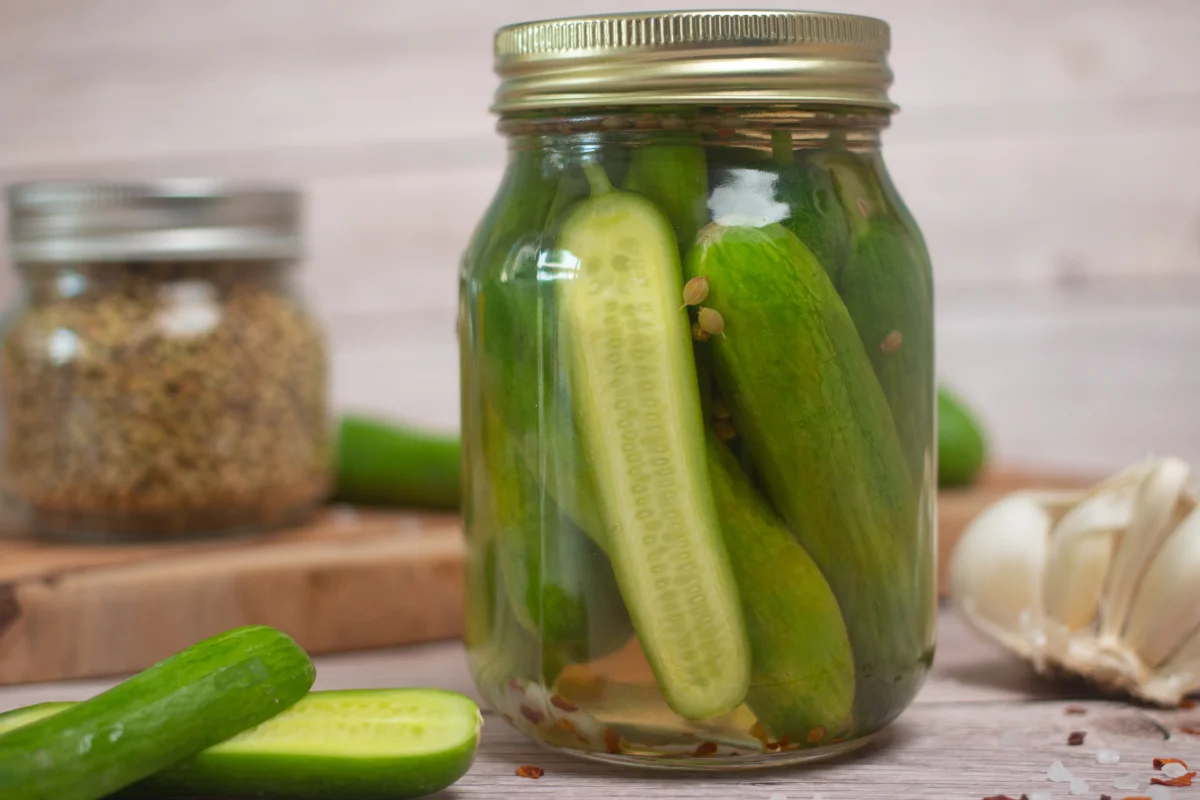

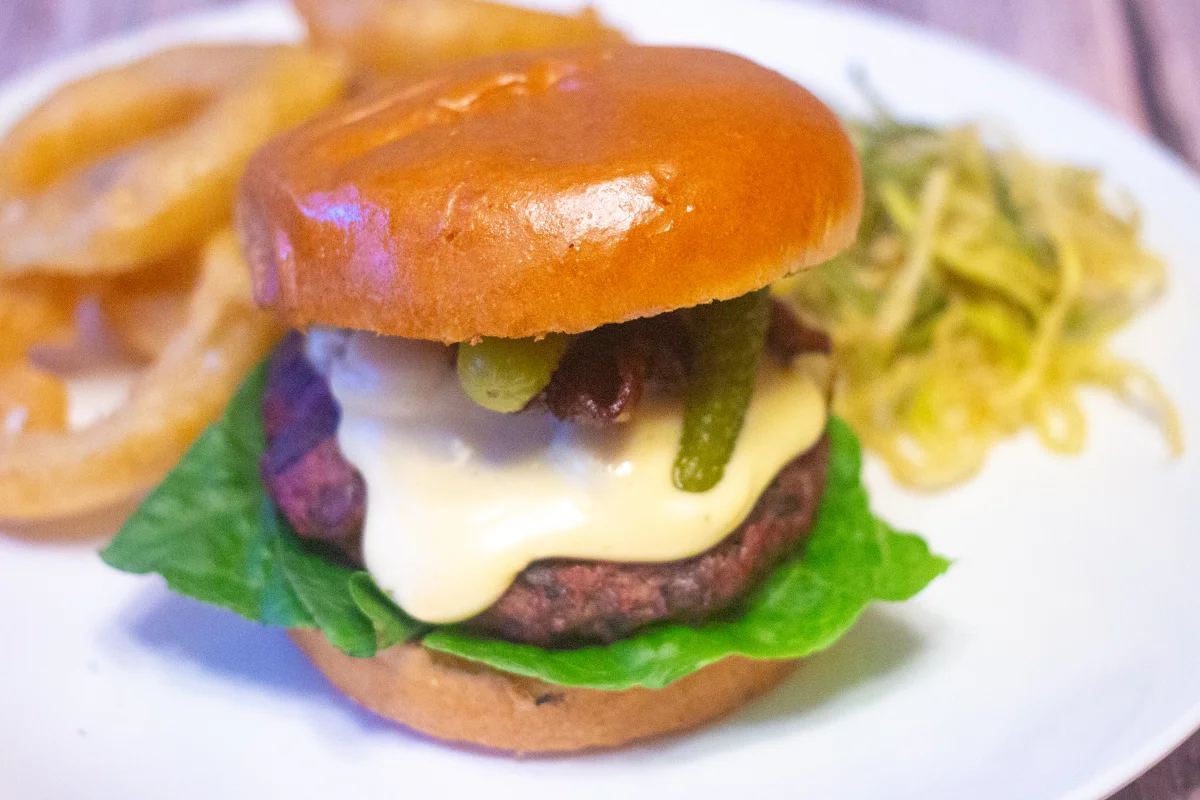
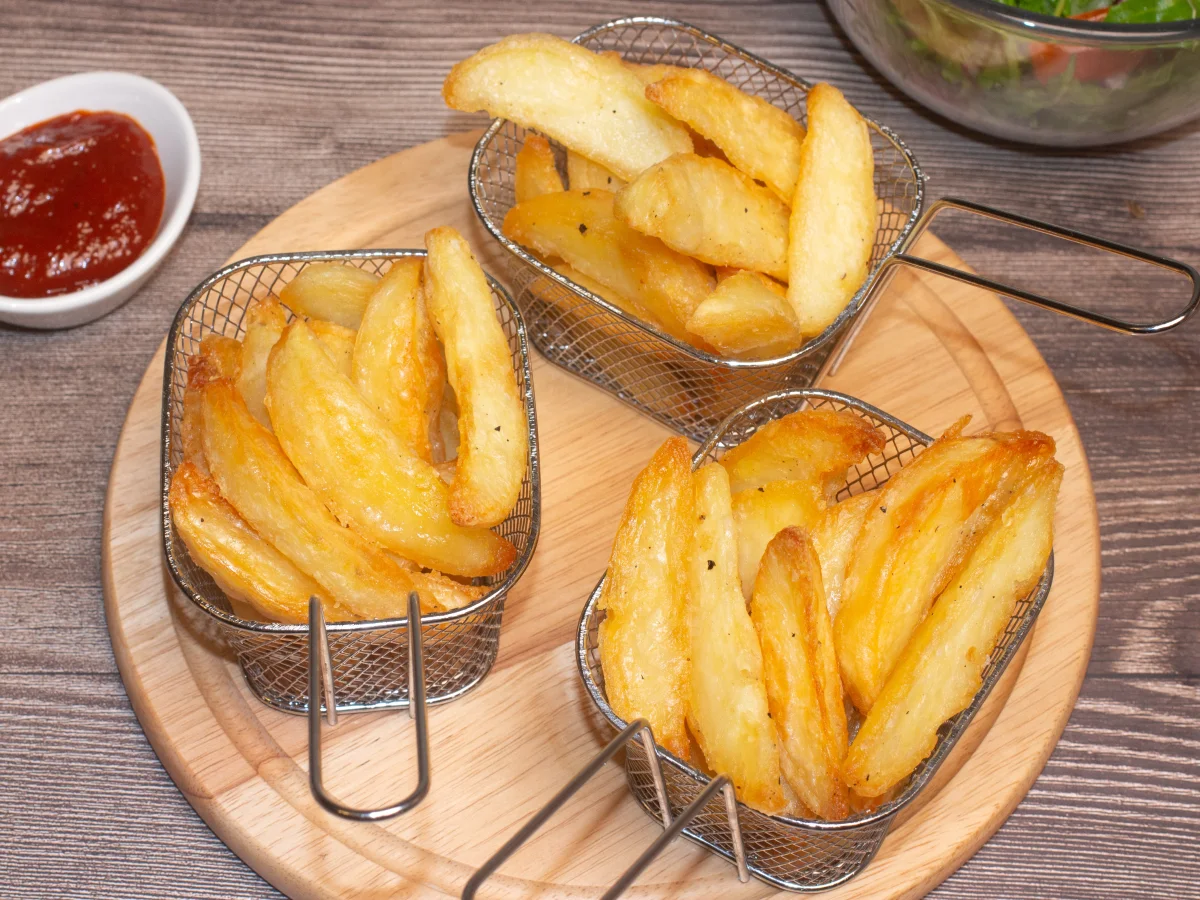
Comments (0)